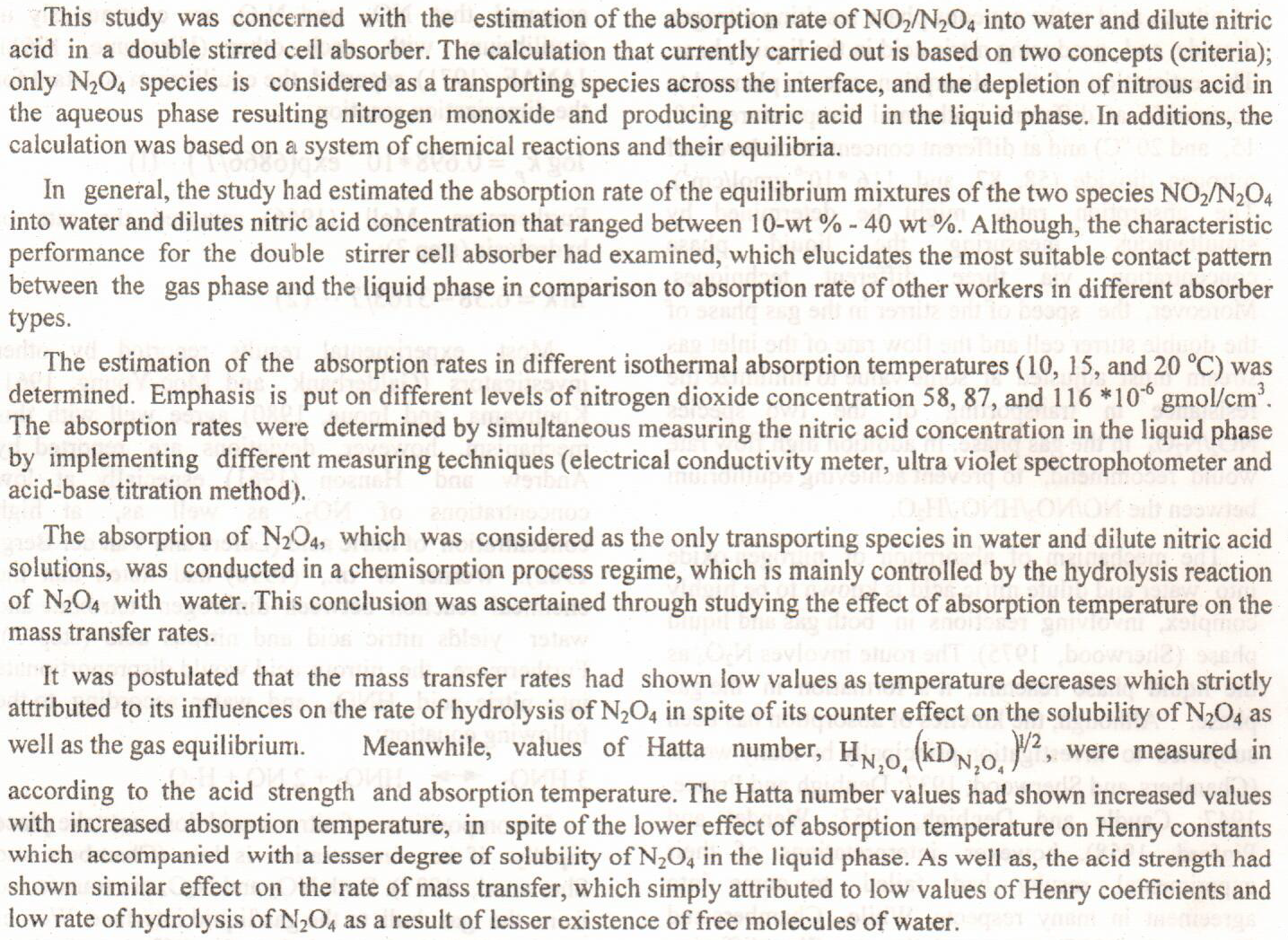
Effects of Ozonated Water on Micro Leakage between Enamel and Fissure Sealants Prepared by Different Etching Technique (An in vitro Study), Baraa M Jabar*, Muna S Khalaf
While traditional energy sources such as oil, coal, and natural gas drive economic growth, they also seriously affect people’s health and the environment. Renewable energies (RE) are presently seen as an efficient choice for attaining long-term sustainability in development. They provide an adequate response to climate change and supply sufficient electricity. The current situation in Iraq results from a decades-long scarcity of reliable electricity, which has impacted various industries, including agriculture. There are diverse prospects for using renewable energy sources to address the present power crisis. The economic and environmental impacts of renewable energy systems were investigated in this study by using the solar pumpi
... Show More (2)
(2)
 (3)
(3)
 (3)
(3)
Mature oil reservoirs surrounded with strong edge and bottom water drive aquifers experience pressure depletion and water coning/cresting. This laboratory research investigated the effects of bottom water drive and gas breakthrough on immiscible CO2-Assisted Gravity Drainage (CO2-AGD), focusing on substantial bottom water drive. The CO2-AGD method vertically separates the injected CO2 to formulate a gas cap and Oil. Visual experimental evaluation of CO2-AGD process performance was performed using a Hele-Shaw model. Water-wet sand was used for the experiments. The gas used for injection was pure CO2, and the “oleic” phase was n-decane with a negative spreading coefficient. The aqueous phase was deionized water. To evaluate the feasibilit
... Show More (10)
(10)
 (10)
(10)
The determination of river pollution impact on the performance of water treatment plants is achieved by two main objectives. The first is to study raw and treated water qualities and comparing them with standards and the second is to evaluate the treatment plants efficiency. The analyzed data were those water quality parameters in relation to physical, chemical and bacteriological characteristics for river water and produced water by seven water treatment plants located on Tigris River passing through Baghdad City.
The results of this study indicated that all raw water characteristic are within the surface water standards established by Iraqi and USA criteria except Bacterial Counts.
Tigris River water is of good quality to be trea
Most drugs undergo some metabolism in the liver before excretion by the kidneys or bile. Thus, it is not surprising that liver injury may be provoked due to its exposure to various drugs and compounds. Drug-induced cholestatic liver injury may occur particularly under conditions of increased drug concentrations, genetic alterations in expression of enzymes or transporters. Additionally, the drug-induced cholestasis can be caused by direct toxic effects of drugs or their metabolites on different hepatic cell types or through an immune-mediated process. Amoxicillin/ clavulanic acid, an antibiotic that is therapeutically utilized for the treatment of a number of bacterial infections. Omega-3 fatty acids are unsaturated fatty acids that have ro
... Show MoreLaser etching may be an alternative to acid etching of enamel and dentin. Several characteristics of irradiated dental hard tissues have been considered advantageous, microscopically rough surfaces without demineralization, open dentinal tubules without smear layer production and dentin surface sterilization. The aim of this study is to determine and compare histology the microleakage in class V cavity restored with a light cured composite after conditioning the samples(tooth surface) with 1-acid etching, 2-Q-switched Nd:YAG Laser etching and finally 3- acid and laser etching. Materials and methods: Twenty four non carious human extracted teeth were used in this study. The samples were equally grouped into four groups of six teeth each.
... Show MoreIn this search, Ep/SiO2 at (3, 6, 9, 12 %) composites is prepared by hand Lay-up method, to measure the change in the thermal conductivity and Impact Strength of epoxy resin before and after immersion in H2SO4 Solution with a 0.3N for 10 days. The results before immersion decreases with the increase of the weight ratios of the reinforcement material (SiO2), It changed from (82.6×10-2 to 38.7×10-2 W/m.°C) with change weight ratios from (3 to 12) % respectively, but after immersion time in the chemical solution where it was (65.6×10-2 W/m.°C) at the weight ratios (6 %) and became (46.6 × 10-2 W/m.°C) after immersion in sulfuric acid. The results of the Impact strength decreased by increasing the percentage weight ratio, it changed f
... Show MoreKE Sharquie, AA Noaimi, EA Al-Janabi, Our Dermatology Online, 2014 - Cited by 11
The concrete industry consumes millions of tons of aggregate comprising of natural sands and gravels, each year. In recent years there has been an increasing trend towards using recycled aggregate to save natural resources and to produce lightweight concrete. This study investigates the possibility of using waste plastic as one of the components of lead-acid batteries to replace the fine aggregate by 50 and 70% by volume of concrete masonry units. Compared to the reference concrete mix, results demonstrated that a reduction of approximately 32.5% to 39.6% in the density for replacement of 50% to 70% respectively. At 28 days curing age, the compressive strength was decreased while the water absorption increased by increas
... Show More (2)
(2)
